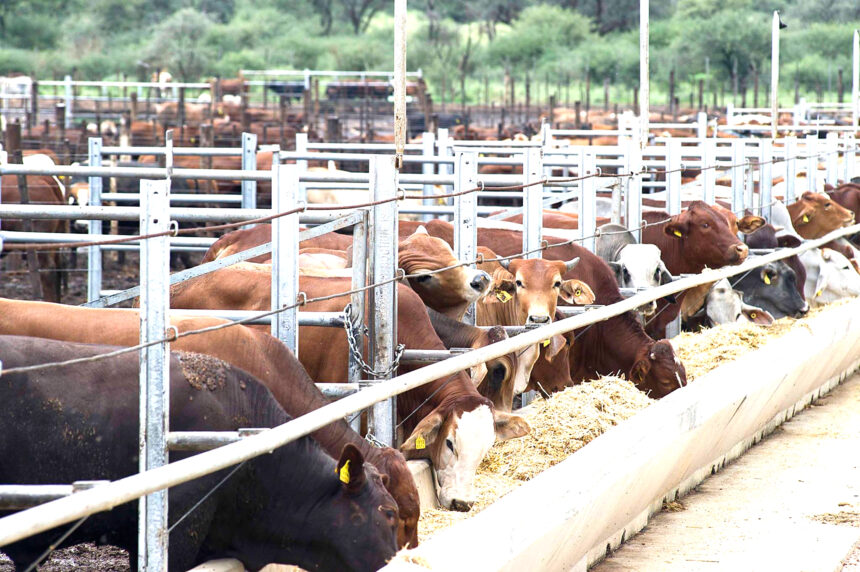Namibia exported over 19000 head of cattle on the hoof between June and last month, which saw overall exports of live cattle increase from 17 361 head exported during June 2024 to over 19 000 exports in July 2024.
The latest Livestock and Livestock Products Board of Namibia (LLPBN) report indicates that a surge in live cattle exports marked a 9.26% increase, and speaks to a positive upward trajectory within the beef industry.
This is despite the persisting drought that has affected farmers countrywide.
Overall, especially when observed from a year-to-year basis, the country’s exports of live cattle are 21.77% higher than those recorded in July last year.
In terms of total marketing of cattle, there was an increase of 24.12% when compared to 30 151 cattle marketed in July 2023, to an improved 37 423 heads of cattle marked in July 2024.
The majority of Namibia’s cattle, particularly weaners, were predominantly exported to the South African market, while smaller quantities of live cattle were exported to Angola and Botswana.
The majority of cattle exported to South Africa went to feedlots, which was about 95.76%.
Pork industry
Meanwhile, there were also some positive movements in the local pork industry, which saw a total of 4 100 pigs being slaughtered during July 2024.
This shows an increase of 10.39% on a month-to-month basis from the previous number of 3 714 animals slaughtered in June of this year.
When observed on a year-to-year basis, the number of pigs slaughtered recorded an increase of 8.49% from July 2023 to July 2024.
During the period under review, the Mariental and Halooli abattoirs slaughtered 2 709 and 1 359 pigs, respectively.
Imports of pork carcasses and processed pork products (cooked & uncooked) both depicted an increase of 30.94% and 42.07%, respectively, on a month-to-month basis.
Pork offal made up 70% of total pork imports, followed by cooked pork and uncooked processed pork, which accounted for 18%, pork cuts at 7% and pork carcasses, which took up 5%.
Namibia’s top five import countries for all pork products are South Africa, which accounts for about 52.31% of the country’s imports, followed by Germany, which supplied 20% of Namibia’s pork needs.
Spain (15.38%), Botswana (4.62%) and the United Kingdom (1.54%) are the other three countries from which Namibia imported its pork products.
Local context
Even though agriculture’s contribution to the Namibian gross domestic product (excluding the fishing sector) over the last five years has been just under 4%, it remains one of the country’s most important sectors, as the majority of Namibians are dependent directly or indirectly on the agricultural sector for their livelihoods.
Livestock farming contributes to approximately two-thirds of Namibia’s annual agricultural production, with crop farming and forestry making up the remaining one-third (excluding the fishing sector). Estimated to be worth N$6.3 billion, Namibia’s livestock farming sector is in dire need of growth.
Many experts have opined that only conducive policies and a constructive regulatory environment, as well as a common vision for the Namibian red meat industry, will enable substantial growth to take place in the Namibian livestock farming industry.
-ohembapu@nepc.com.na


